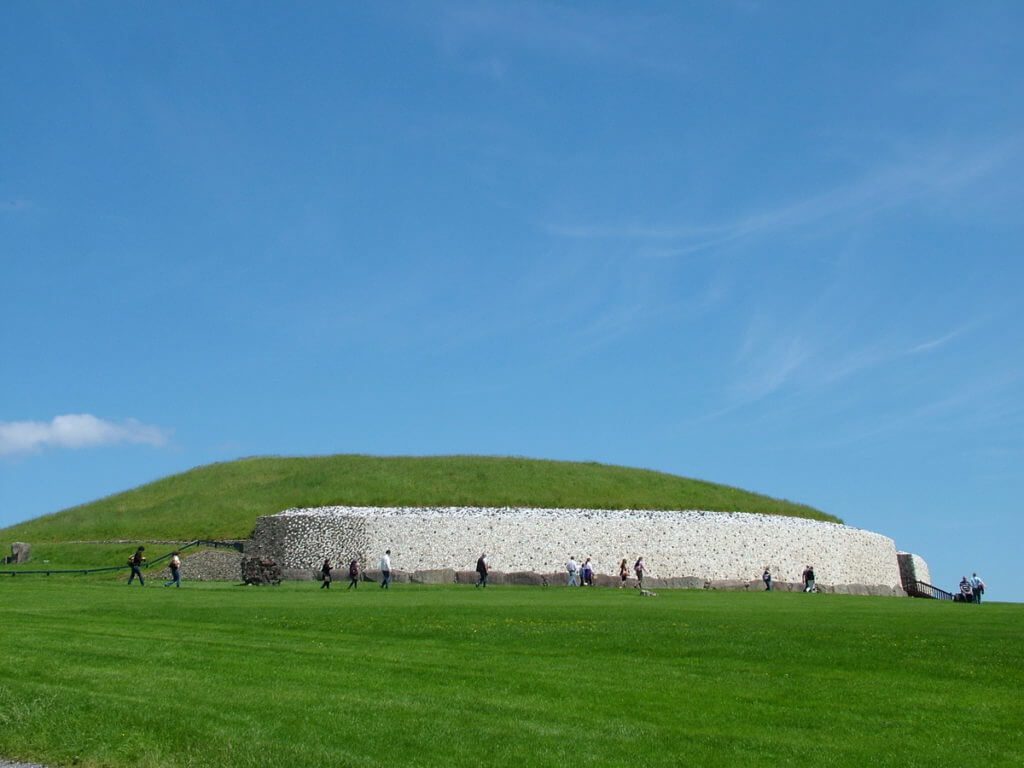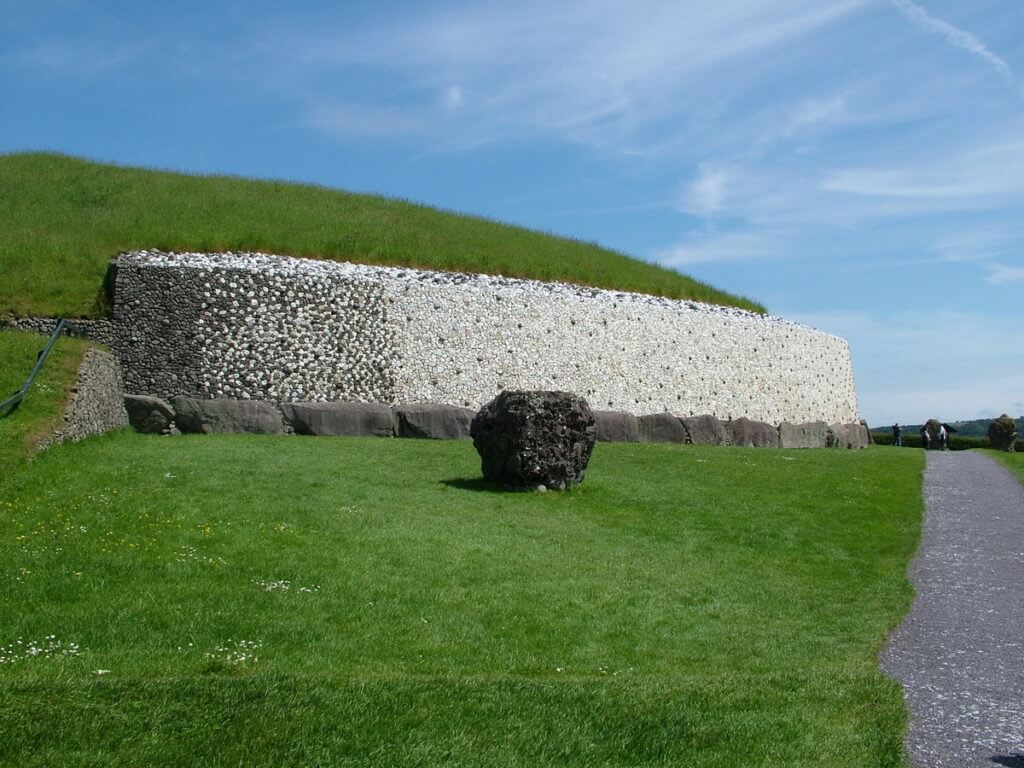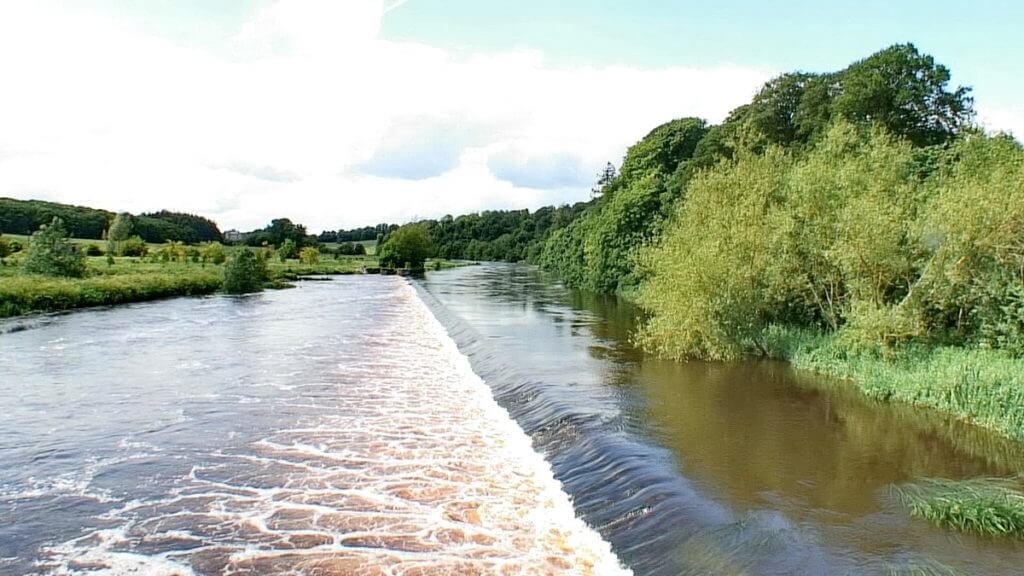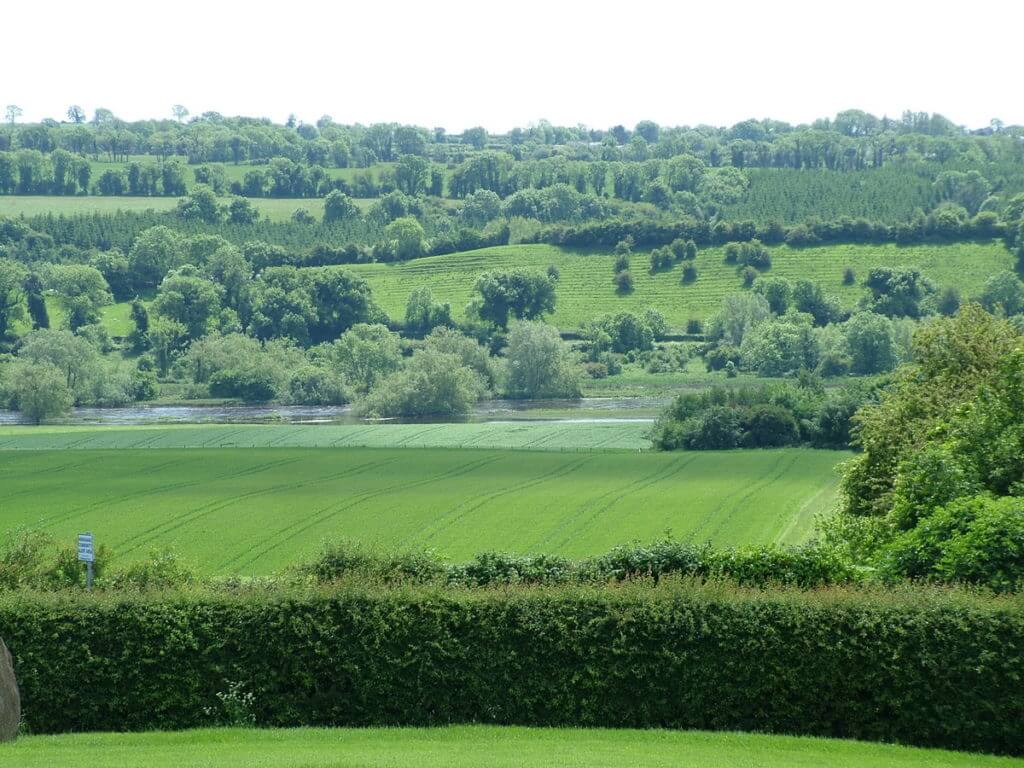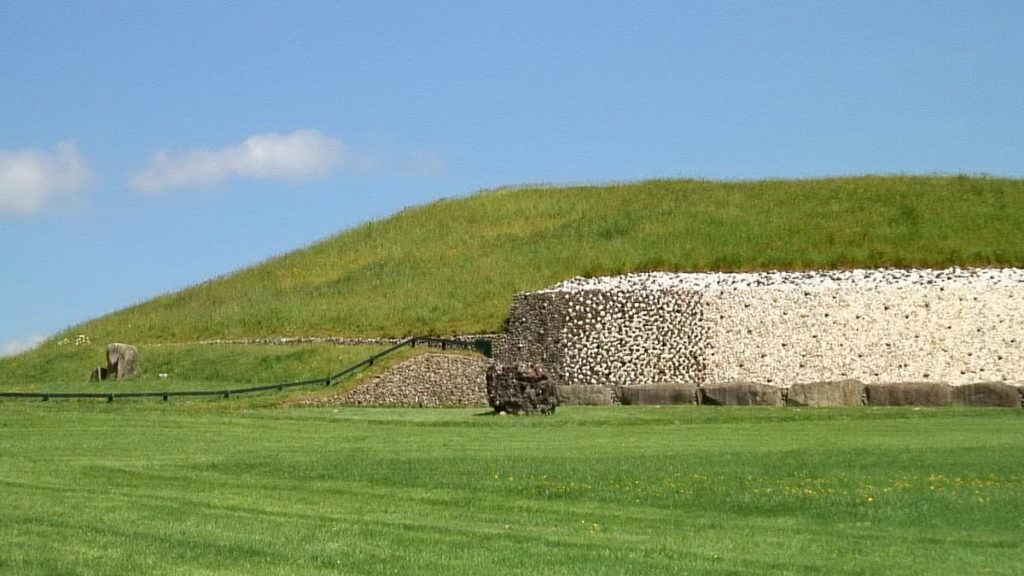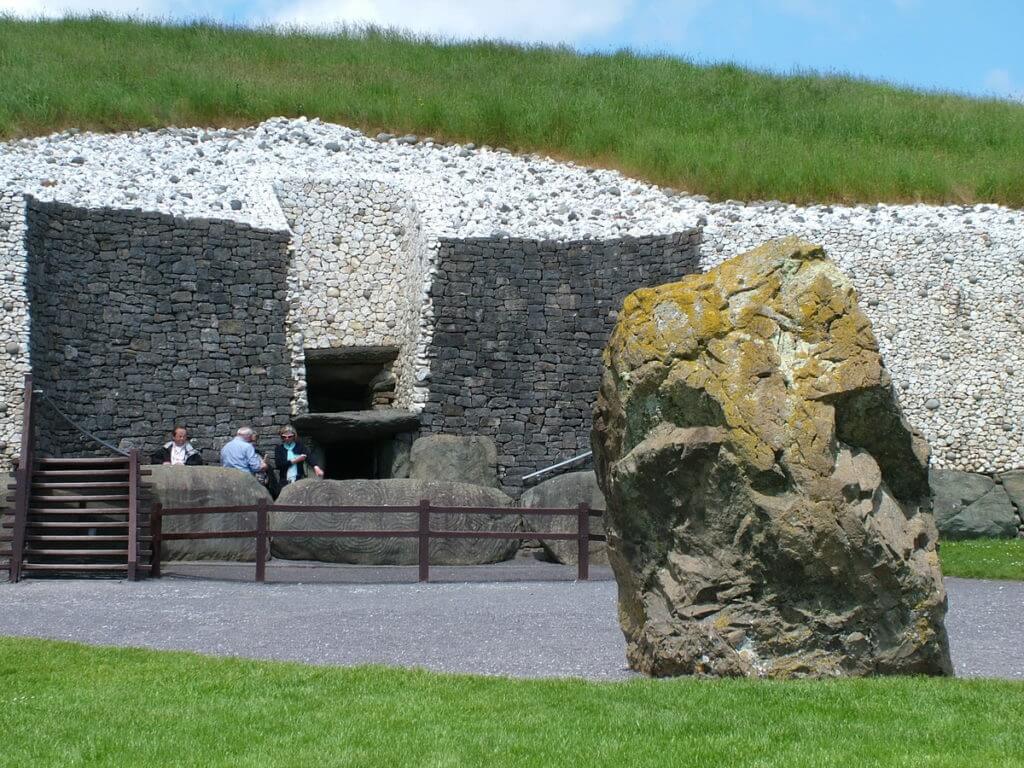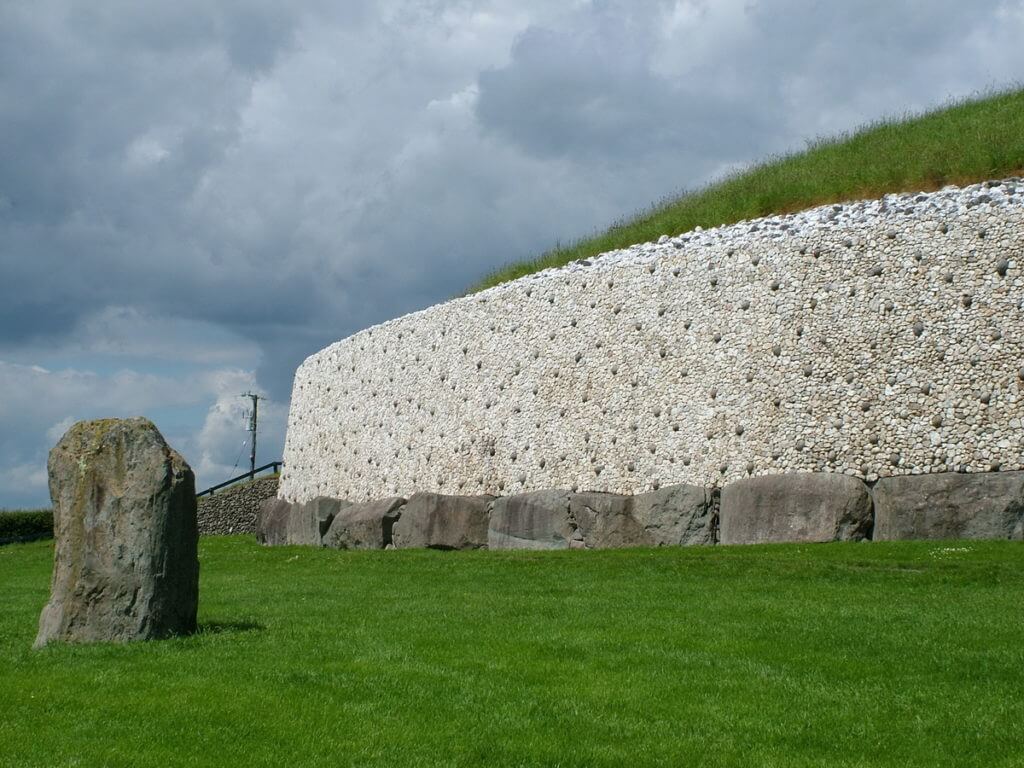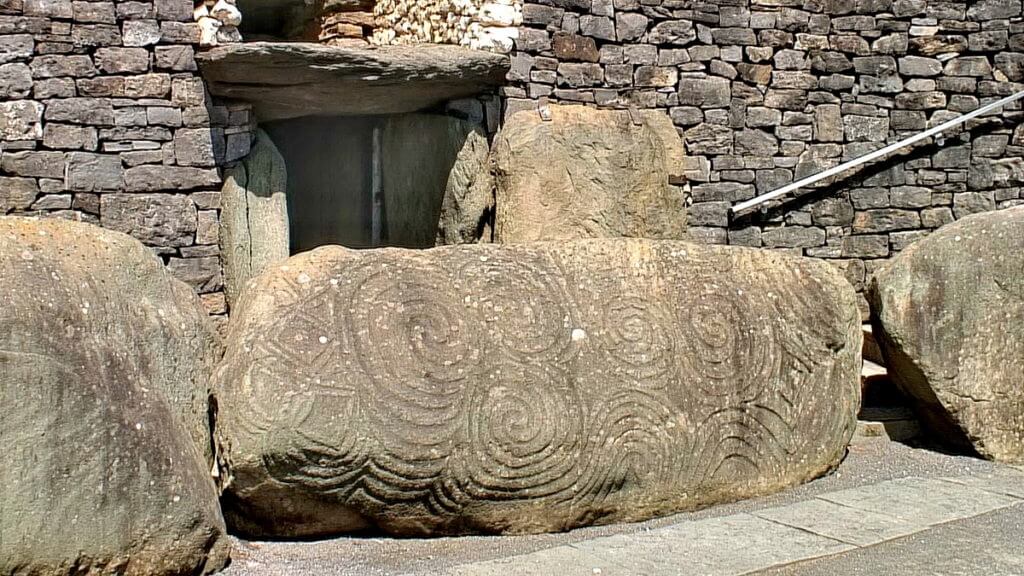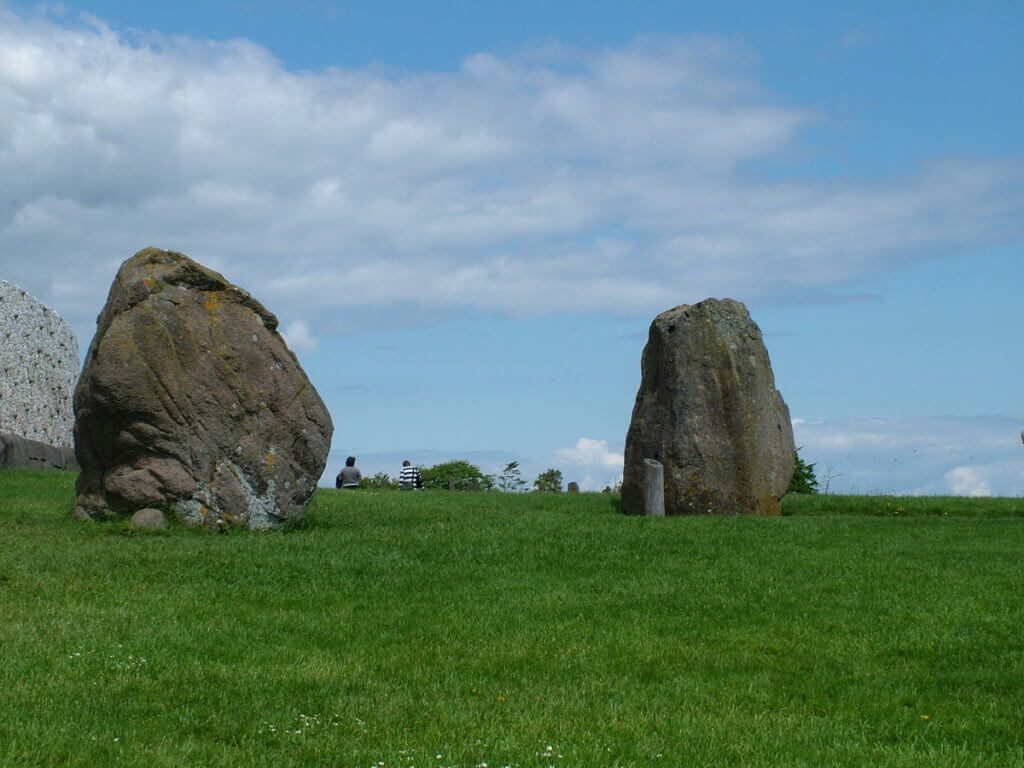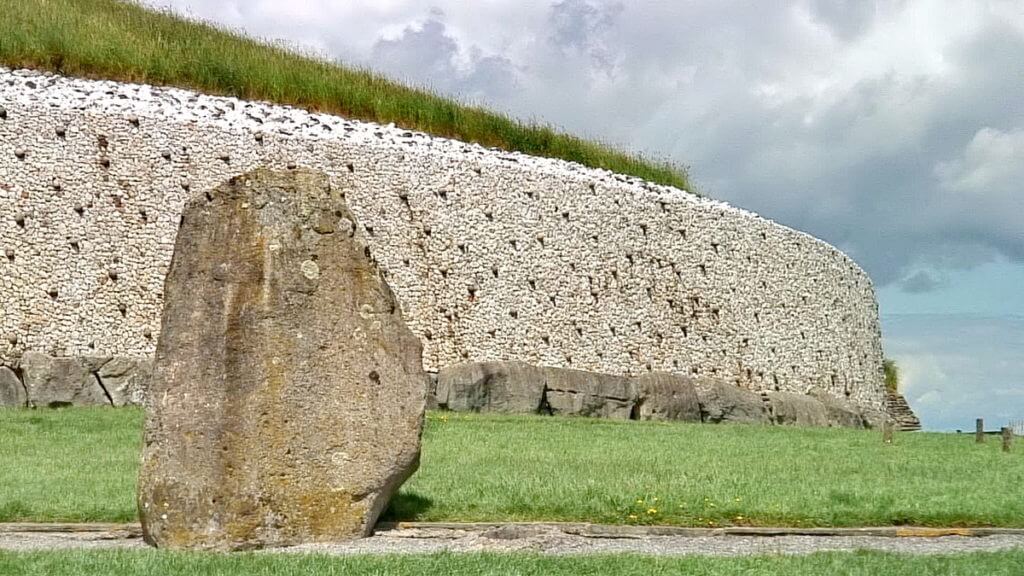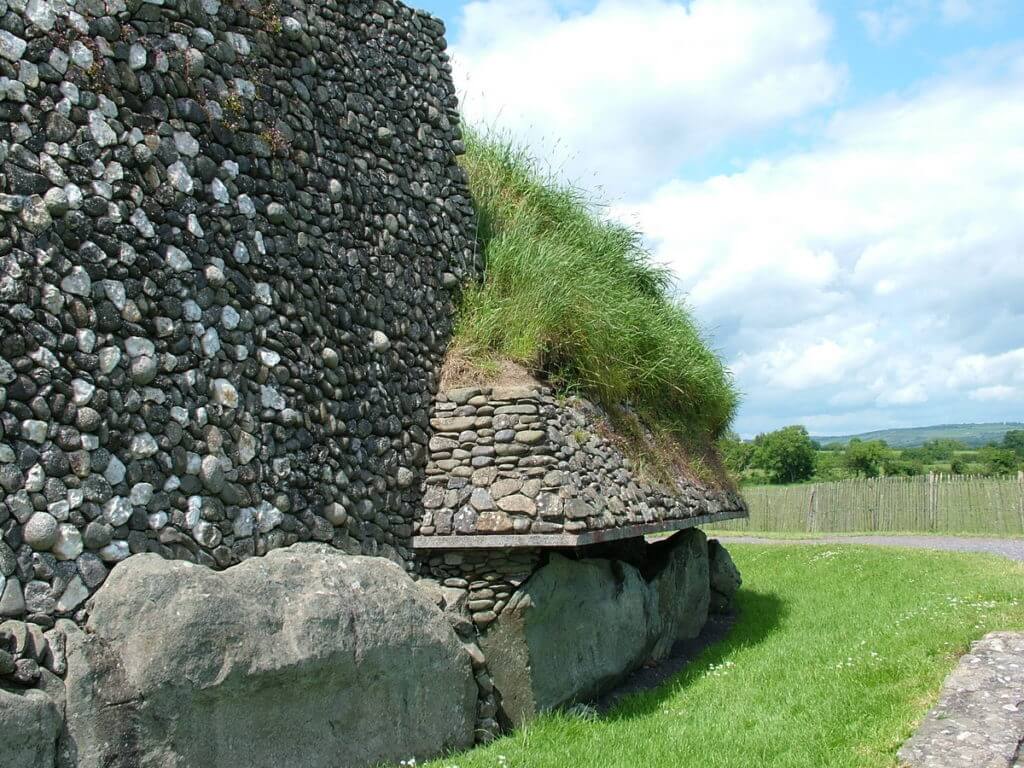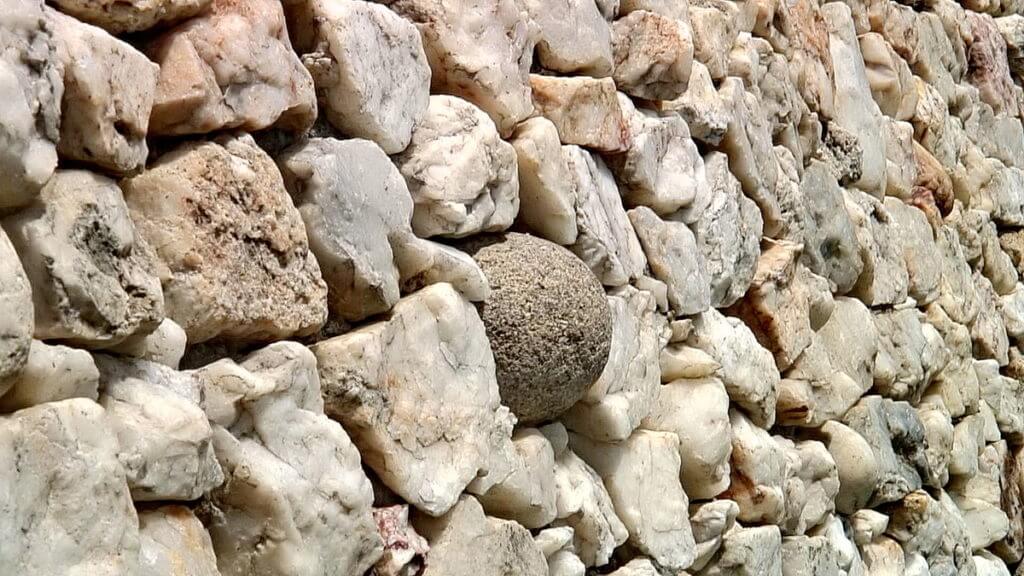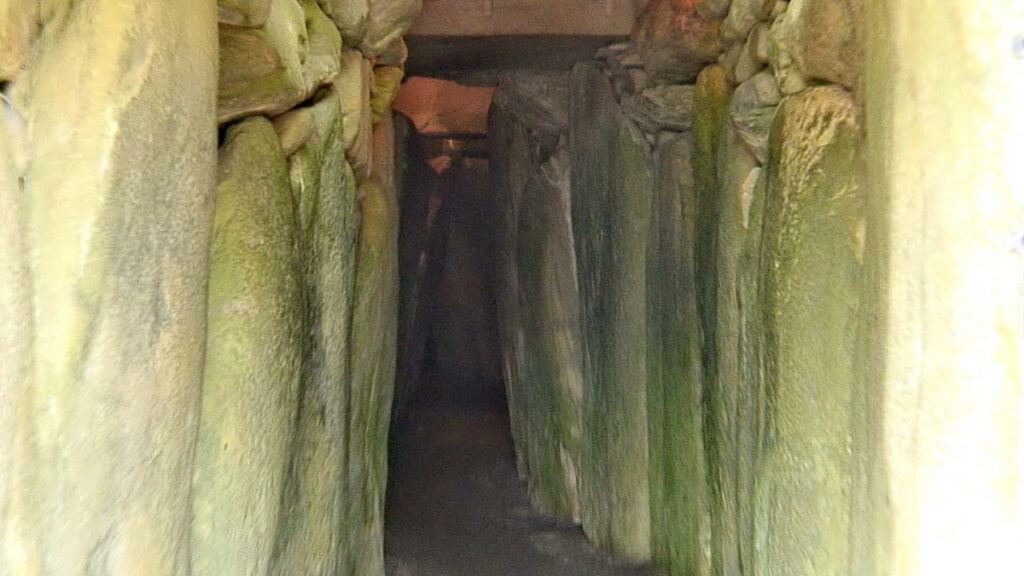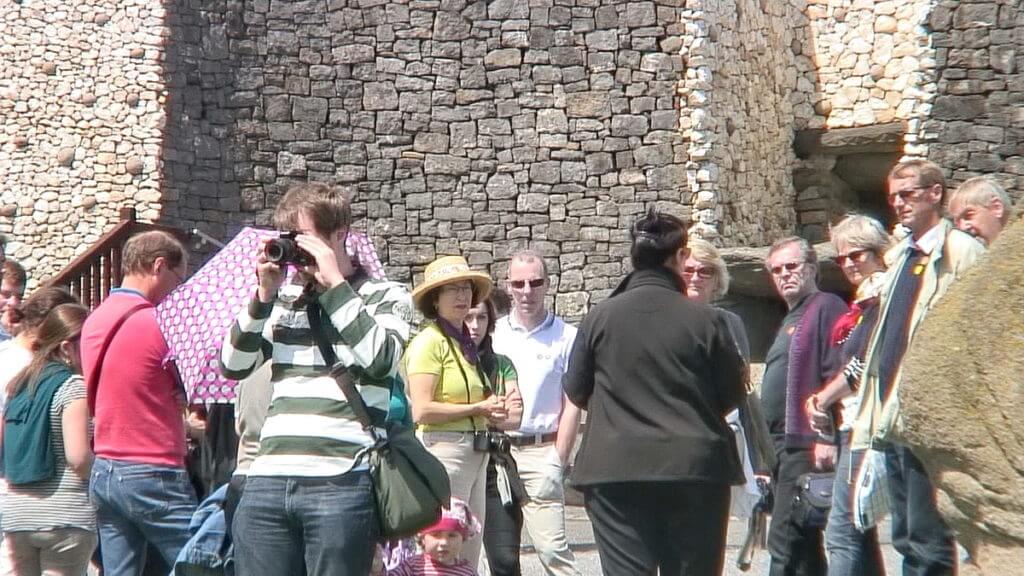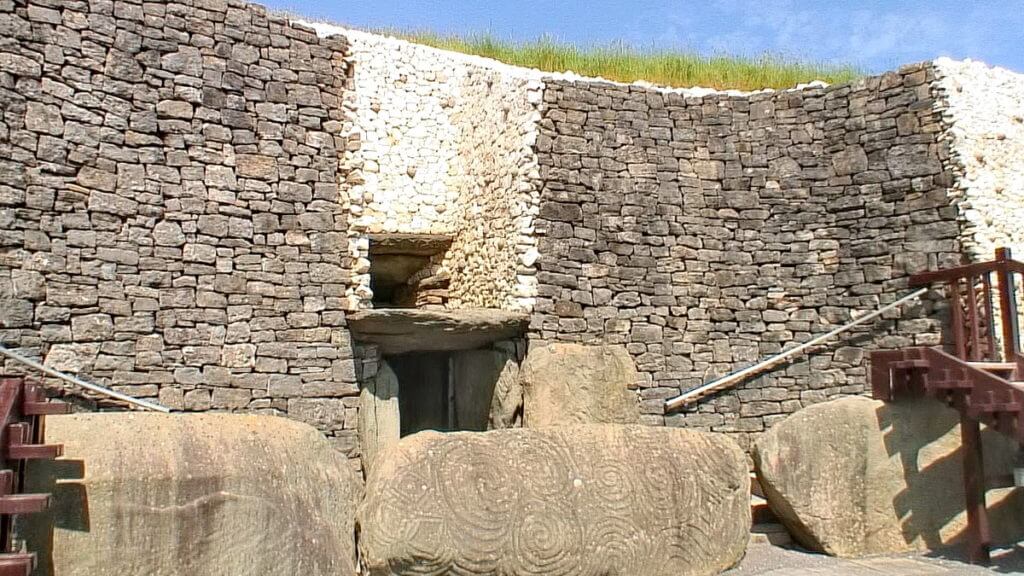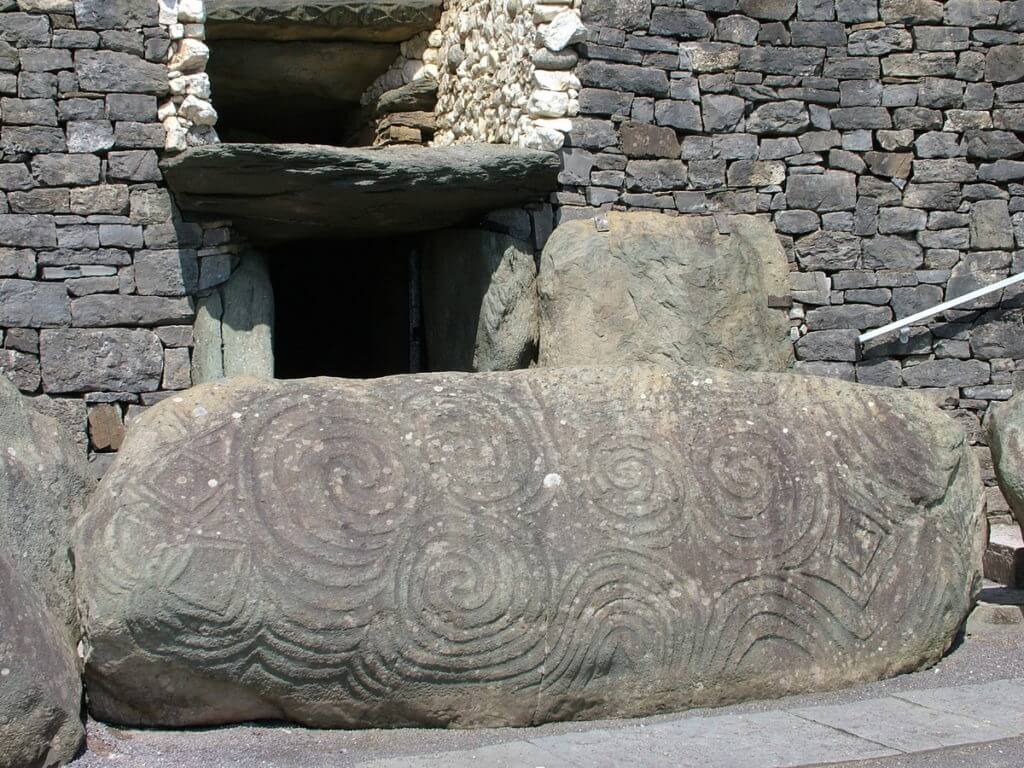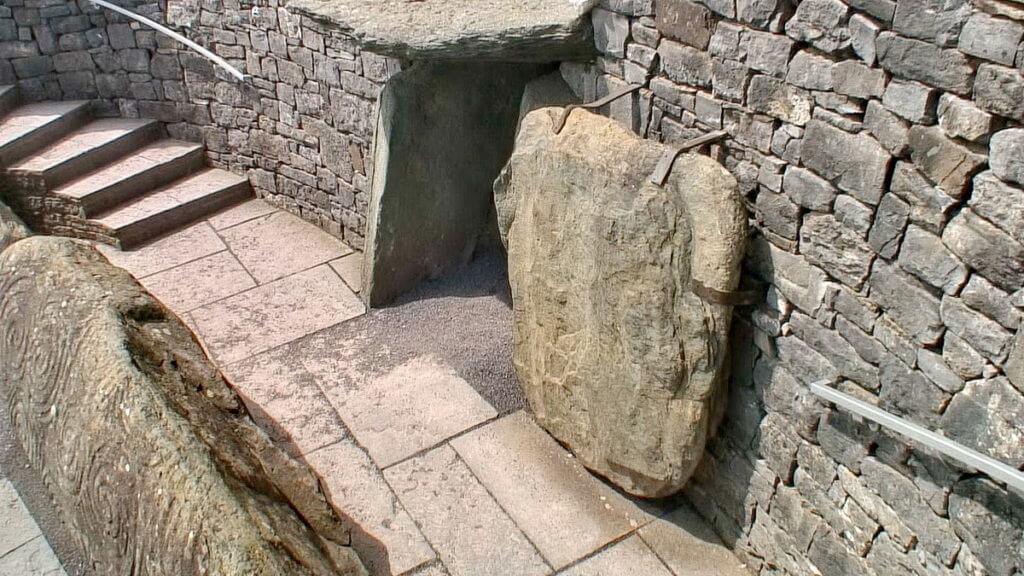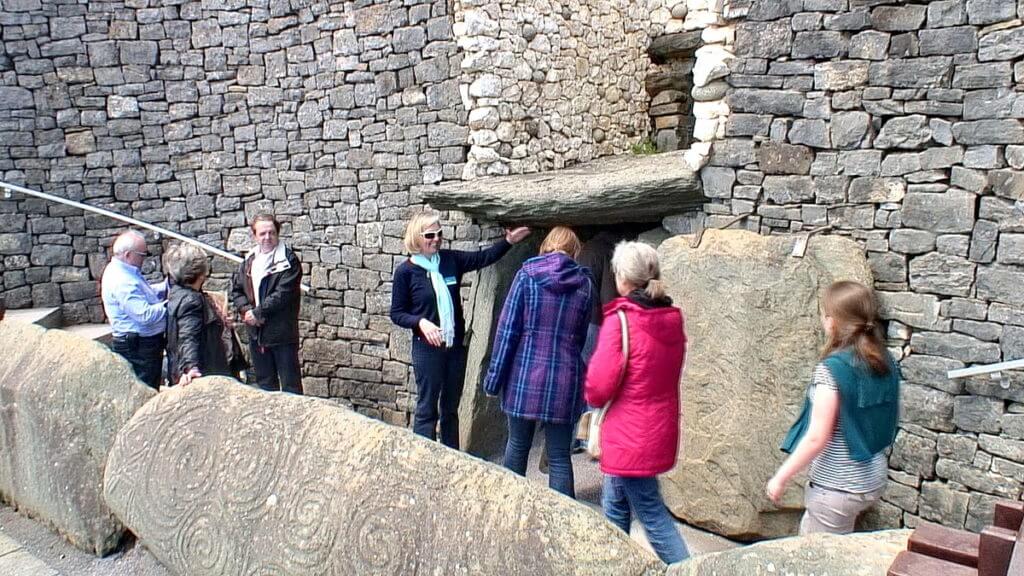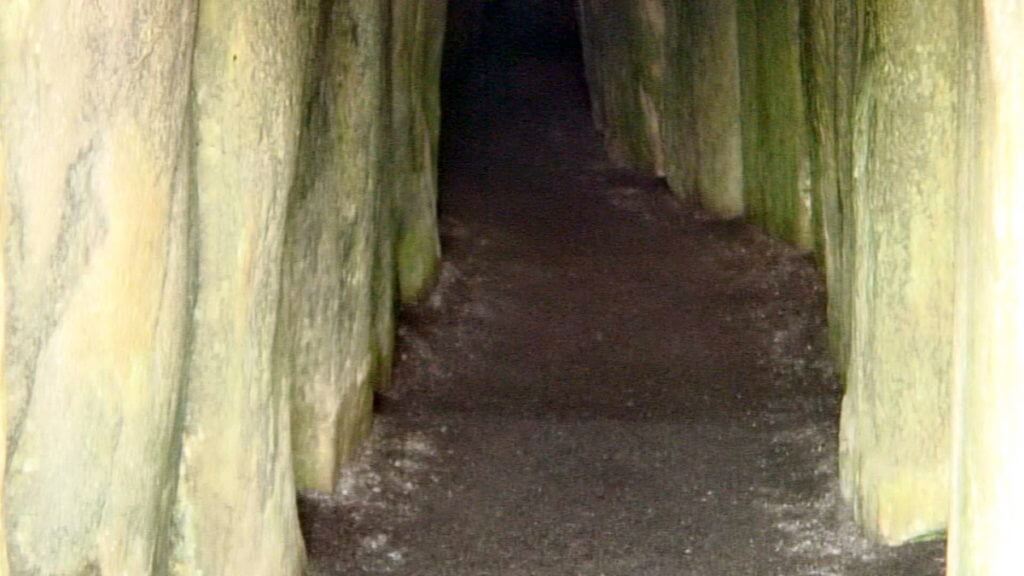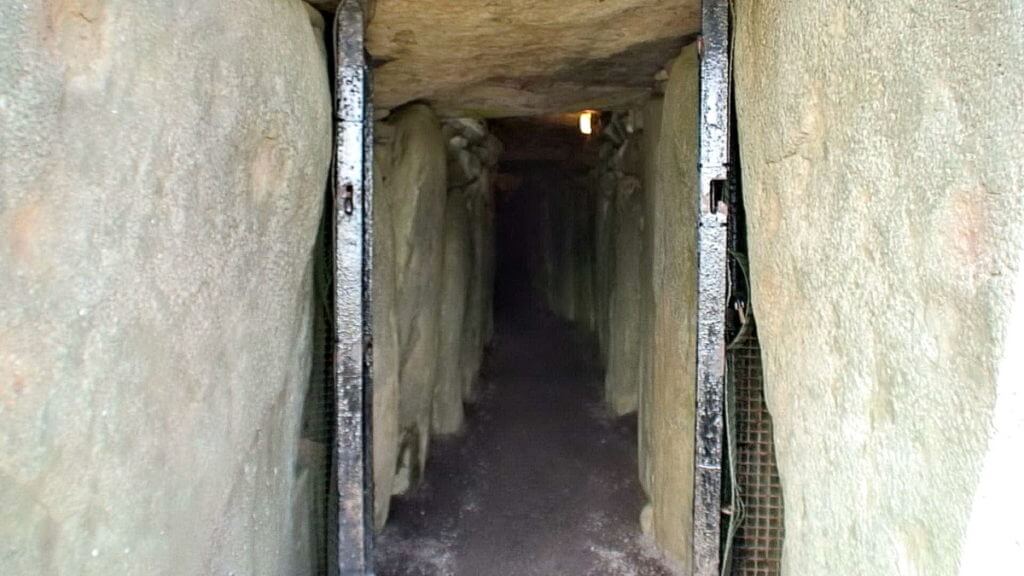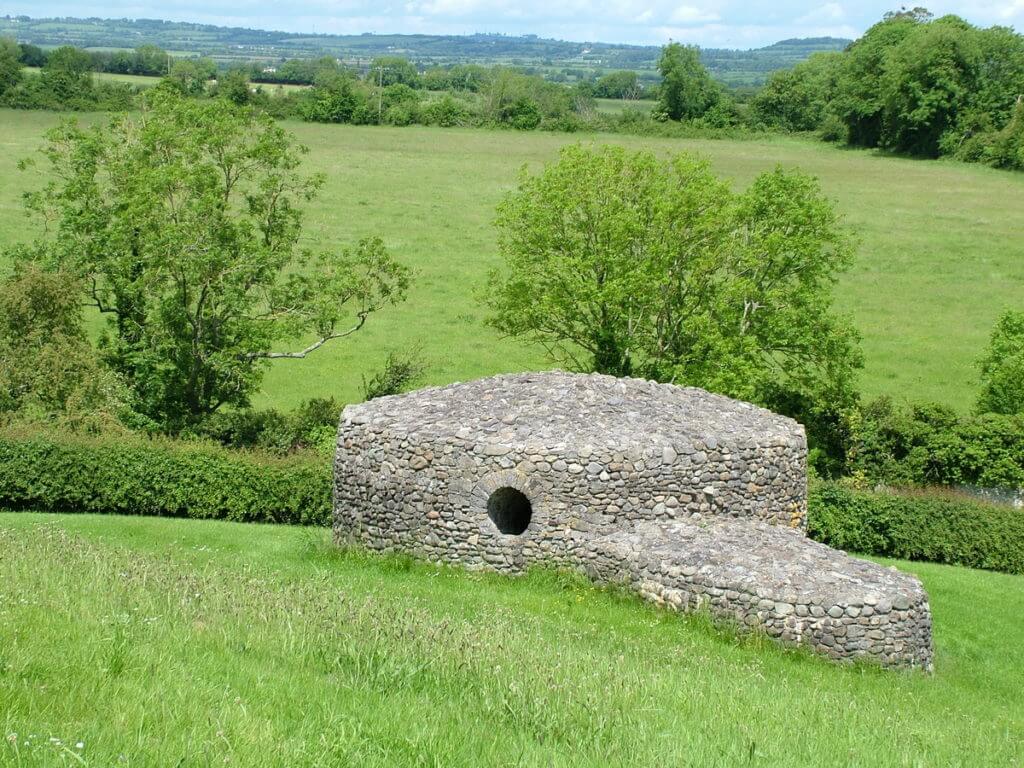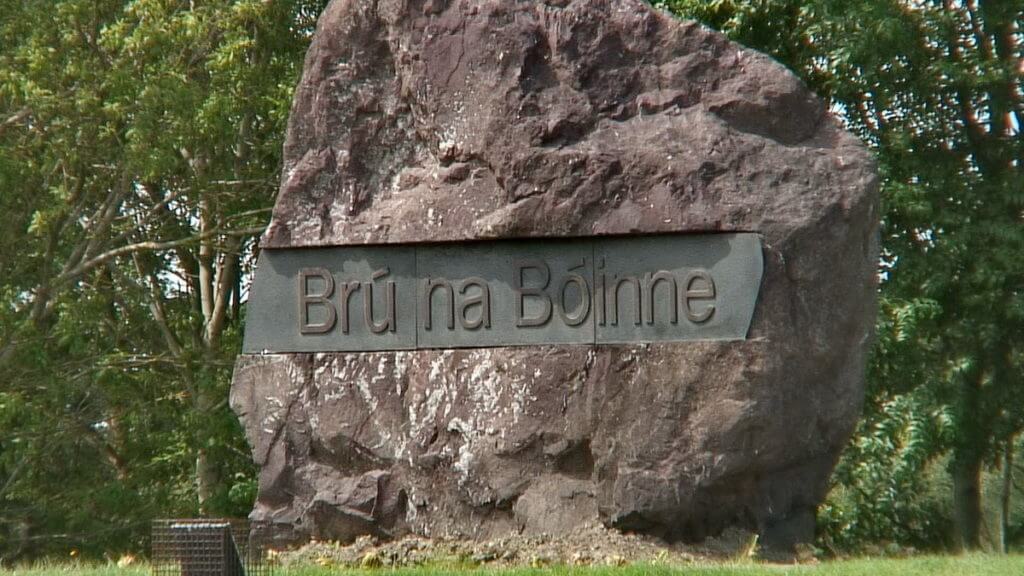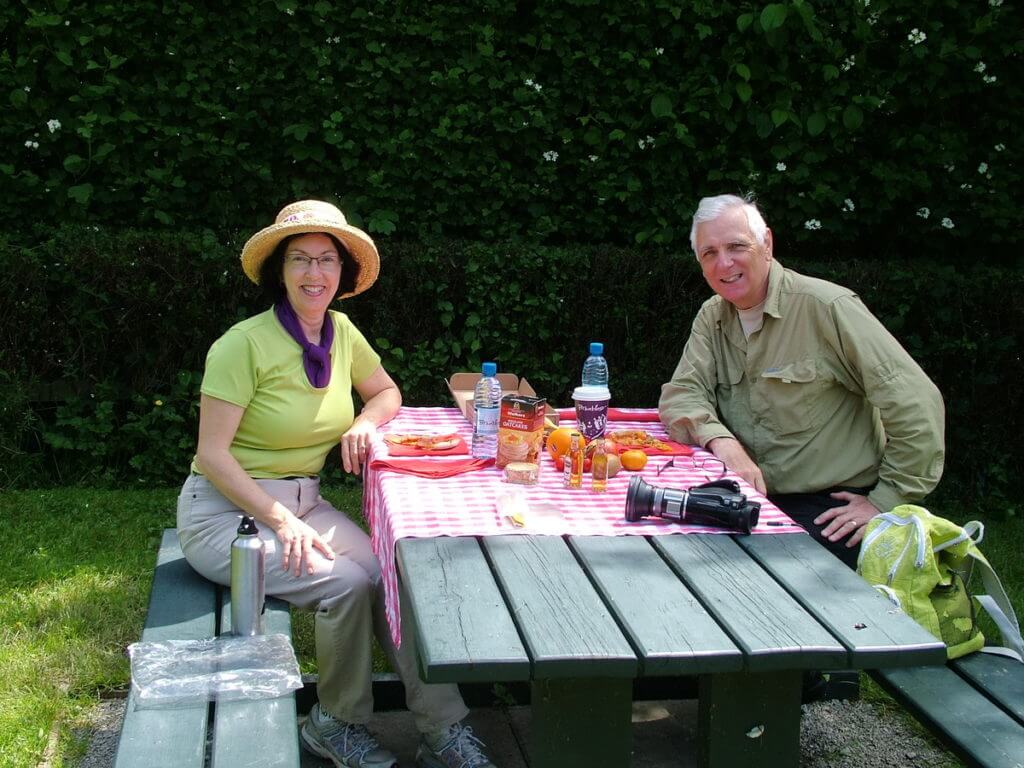Our Visit To Newgrange – Ireland’s Ancient Passage Tomb

A must-see for Bob and me while traveling in Ireland was Newgrange, an important passage grave west of Drogheda in County Meath. This megalithic structure is considered one of the most important in Europe and the great national monument of Ireland.
Newgrange is a prehistoric monument that was built by Stone Age farmers during the Neolithic Period some 5,200 years ago, around 3,200 B.C. This makes Newgrange older than both Stonehenge in England and the Great Pyramids of Giza in Egypt.
We found Newgrange in the Boyne Valley on the north side of the River Boyne.
The farming community that built Newgrange thrived on the rich lands of the valley.
Newgrange consists of a large rounded mound that is 85 metres wide and 13 metres high. Built using alternating layers of earth and stones, it covers one acre of land.
The front facade of Newgrange is covered with white quartz cobblestones.
A ring of 97 large kerbstones surrounds the base of the main monument.
Several kerbstones are decorated with megalithic art in the form of carvings hewn into the stone blocks.
A lot of the petroglyphs feature spiral motifs. The most impressive kerbstone is located at the entrance to the mound.
The mound at Newgrange is ringed by a stone circle.
Twelve huge standing stones make up the stone circle with some of the rocks having been transported from as faraway as the Wicklow Mountains about 50 kilometres distant. It is believed that originally there were 35 standing stones.
200,000 tons of rock was used to construct Newgrange over the course of about 30 years.
This suggests a complex society that handed down specialized skills from one generation to the next.
One significant aspect of Newgrange is the stone passageway leading to 3 chambers within the mound. Human bones and offerings found in the central alcove led archaeologists to believe that this was a grave sight.
Visitors cannot drive straight to the mound that is Newgrange. After arriving at the Brú na Bóinne Visitor Centre, Bob and I along with other visitors were conducted to the grave on a small bus.
Being a sacred temple, it was necessary for the group to be escorted into the grave by a historical interpreter.
The historical interpreter pointed out to us an interesting opening above the entrance to the passageway. This is called a roof-box and it works something like a skylight in today’s architecture.
For several days around the Winter Solstice, the roof-box allows rays from the rising sun to illuminate the passageway.
Set to one side of the entrance and secured in place is a large flat stone that used to act as a door to prevent entry into the grave.
As each person entered the passageway, the guide reminded them to watch their heads. It was a low ceiling.
As we walked the 19-metre long stone passageway to the central burial chamber, we found ourselves going up a slight grade.
The interior remains dry and air tight after all these centuries.
It is amazing to learn that, each day for several days on the Winter Solstice, the alignment of the stone passageway with the rising sun allows rays to penetrate to the floor of the passageway via the roof-box. The sunbeams extend all the way to the central chamber and eventually fill the chamber with dramatic light.
Music “Green Fields” courtesy NeoSounds.com
Although mysteries still abound about Newgrange and secondary structures on the grounds, it is thought to have had astrological significance because it marked the start of a new year and probably played a part in the community’s religious, spiritual and ceremonial pursuits.
Newgrange is part of the Brú na Bóinne UNESCO World Heritage Site that also includes the nearby passage tomb mounds of Knowth and Dowth.
As Bob and I partook of our picnic lunch at Newgrange, we contemplated the significance of this historic area that is marked with about 35 lesser henges, mounds and standing stones. We had one more location to visit and that was the Hill of Tara.
Frame To Frame – Bob and Jean

